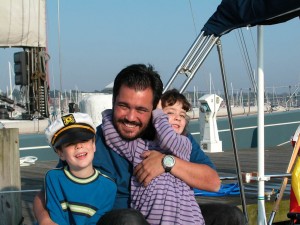One more day…
Well, we have been working non-stop to get the O’Comillas ready for the trip. Why is it that everything that could possibly go wrong before a deadline always does?
Emailed a repair center a week ago with the information regarding an RPM/hour-counter for the engine so they would have the part ready. When we arrive at the store, first they didn’t remember, then they found the email and the name of the person to whom it had being assigned to. When this guy finally shows up he said “Ah, yeah! I remember this, but I haven’t done shit on it.” Hello? The customer is right here! Another guy took pity on us and decided to help us. After waiting for a while for him to search through service manuals, he found the equivalent part. We took it to the sailboat and installed it.
Later we had to replace a remote panel for the power generator only to find out that its battery was dead. Replaced that too. The pump from the auxiliary diesel tank to the main tank was not working so we took it apart only to find out that it was burned, ordered a new one and we are waiting for it. Fixed the metal railings for the bimini, which did not withstand the rough seas from the shakedown voyage. We reinforced them significantly more so we shouldn’t have a problem on our voyage. Added connections for the Raymarine PC interface so that we can have all the vessel information (wind, depth, heading, GPS) available on the computer including routes and tracks. Went to fill out the gas tanks only to find out that they are butane (used in Europe) and not propane which is what is common around here. We lucked out and the folks at the place had a tank of butane from an European ship which they gave us since nobody could use it here in the USA. Phew!
Since that moment our luck finally began to change for the better. We provisioned the sailboat with food, organized the two refrigerators and the freezer.
The list goes on, and despite everything now going smoothly we’ve decided to change the departure date from Friday to Saturday so we could leave a bit more rested. We’ll have a bon-voyage dinner tonight and weather permitting we’ll set sails Saturday…
